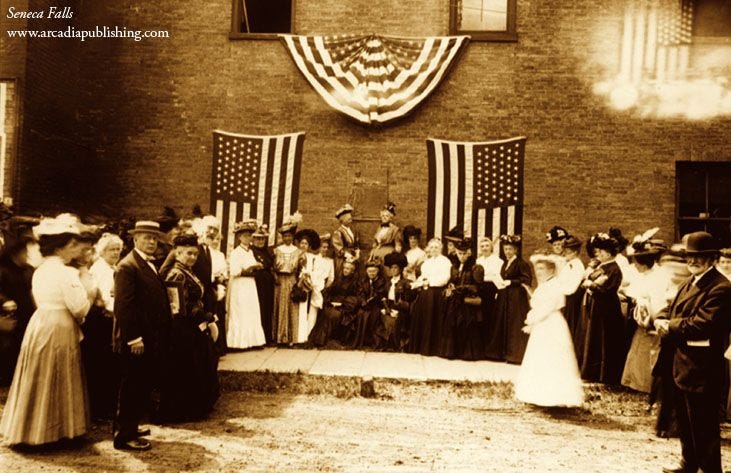
The announcement, published in the Seneca County Courier on July 14, (1848) read,
“A Convention to discuss the social, civil, and religious condition and rights of women will be held in the Wesleyan Chapel, at Seneca Falls, N.Y., on Wednesday and Thursday, the 19th and 20th of July current; commencing at 10 o’clock A.M.
During the first day the meeting will be exclusively for women, who are earnestly invited to attend. The public generally are invited to be present on the second day, when Lucretia Mott, of Philadelphia, and other ladies and gentlemen, will address the Convention.”
The 1800s were a time of social change, and constitutional mud wrestling splitting the entire nation at its seams right upon the idea of constitutionally-protected human rights. It was a century that included the American Revolutionary war, the American Civil War, and the dawning of an economic overdrive of industrial invention and production unlike the world had ever known. The forms of media production and the distribution of information during the mid 19th century relied mainly on the speed of horses, boats, trains and word of mouth. There were no telephones, fiber optic cables, or rapid ways through which to quickly connect information between people, local governments, and society at large. The political playing field in this respect, largely rested upon localized efforts.
So attuned to connecting ‘women’s rights’ to ‘human rights,’ women suffragist, as they were called, directed their efforts via moral exhortation and political action within the public domain. Writing, photography and the distribution of these allowed the women leaders that congregated in Seneca to amplify their message, much in the same way that Frederick Douglass, the abolitionist, writer, and statesman used social media to achieve political influence.
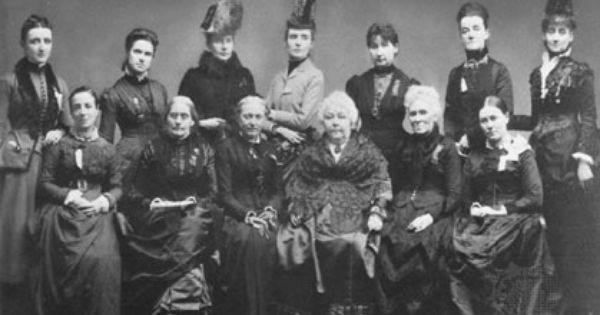
In its early beginning, the woman’s rights movement was one of human rights, with the ultimate goal of getting constitutional protections. Equal pay, political representation, land ownership rights, the right to be educated, and to be treated as legal equals in American society was a galvanizing issue spurred on through the efforts of a select number of women leading the organizational vision; both providing critical intellectual support, and issuing a consistency in rhetoric and action. Leaders, such as Elizabeth Cady Stanton, Victoria Woodhull, and Susan B. Anthony, all took to writing, and managing newspapers, and generally plying their mission through what means they could apply and occasion they could accomplish. They were outspoken, confident, resolute, and staunch loyalists to the cause of constitutional human rights.
Their writings pressed upon America, and the physical presence of their organizational, grassroots influence served as a continual reminder that the social changes of the era would not end with African-Americans being recognized from the southern to northern states as free and equal fellow Americans. Indeed, Susan B. Anthony, an abolitionist and a leader in the Women’s movement illustrated the clear connection of solidarity between the human rights movement to end slavery and that of women being established as equal citizens with the practice of civil disobedience in order to attain voting power and receive representation in government.
Access to education was understood to be the conduit to victory, paving the way to create the political ramparts that eventually led to the declarations made in New York in the Summer of 1848; with the convention itself hastening and accelerating the call to press forward on the right for women to be educated critical thinkers, accomplished professionals, and equal citizens. In fact, it was Elizabeth Stanton and Lucretia Mott, whom after not being allowed to speak at a London anti-slavery convention, and thus, not being allowed to express nor attain any political platform, decided to return to the U.S. and form their own human rights women’s convention. These women took to writing, speaking and the creation of their own social media platforms; seeing such abstract constructs as the medium through which to prompt the social, political, and legal fulfillment of their message.
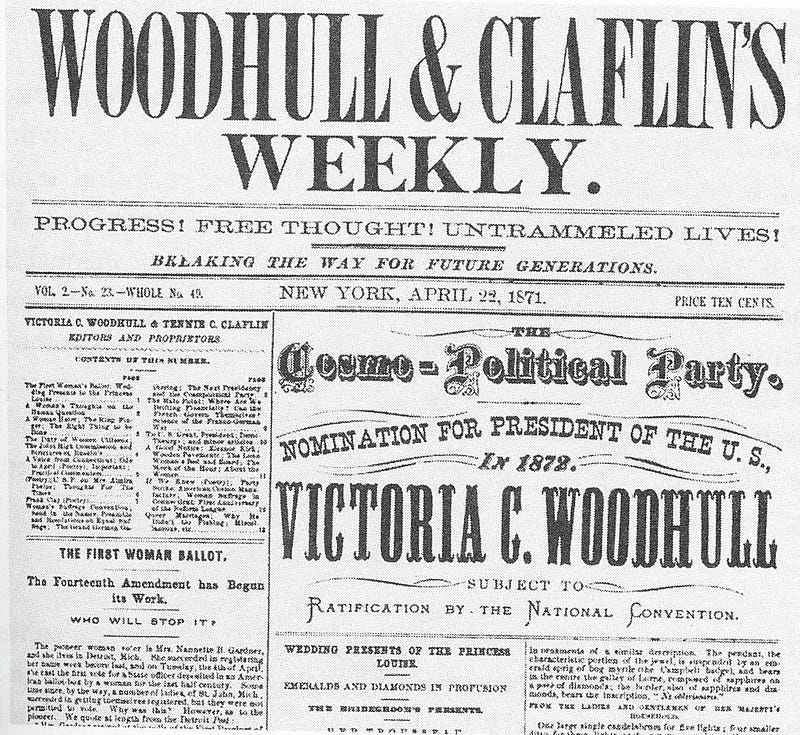
Nowadays, everyday Americans can freely join to existent social media platforms, though the corporatist inclinations of all of these have been found to be politically focused and slanted according to the administrative views of the social media companies. Back then though, the leadership of the Women’s Rights movement did not wait upon popular support from the social media platforms of their time, such as the newspaper companies, but created their own platforms, hence, seeking to outflank and diminish the narratives of the reigning news entities.
As monumental as the meeting of 300 or so individuals was; to assume that the Women’s Rights Movement in America began with the convention though, would be to dismiss the achievements of pioneer women in the 18th,19th and 20th century. Louisa May Alcott found great literary, commercial success in her book, Little Women, bringing a light to the life of American women. Her contribution was a foundational brick towards the building of a human rights edifice buttressing women’s rights. Victoria Woodhull, a prominent social activist who funded her work through speculation on the stock market and through her newspaper, became the first woman to campaign for the Presidency of the United States.
Jarena Lee was the first African-American women to publish an autobiography at the end of the 1700s. A tremendous accomplishment for an individual, especially a woman and African-American in the time of slavery. Sojourner Truth would work under cover of darkness to help conduct slaves from the South to the North through what was known as the Underground Railroad. Her work for the community was a social and cultural human rights achievement. In 1908, Mary Eliza Mahoney, an African-American, founded the National Association of Colored Graduate Nurses and in 1920 was the first woman to vote in Boston when it became constitutionally legal for women to vote for political representation.
For all the calls to bring about human rights equality to women though, African-American women were NOT included in the leadership of the ‘Women’s Suffragist’ movement, yet they themselves co-led as parallel forerunners helping to establish the political underpinnings for the right to be equal citizens in the United States of America. Perhaps the greatest accomplishment catalyst for the initial achievements of the Women’s Suffragist movement was the understanding that in order to achieve political gains towards constitutional legal protection, outflanking the present information modes of news-narrative production hinged upon a combination of (1) educational empowerment and the (2) creation of their own social media platforms; their own newspapers, their own forums, and their own leadership.
Suffice to say, the path forward for these women leaders was made possible because they had the right kind of education, enthusiasm, and clarity of purpose necessary to exact the call for a constitutional change. They were critical thinkers and applied social activists. Their forward momentum was made possible through their control of the narrative that they were placing before America, and the purity of their argument was so strong that it attracted a young 30 year old phenomenon, writer, noted orator, abolitionist and statesman in the making, Frederick Douglass. Mr. Douglass, born in 1818, attended and spoke at the 1848 Women’s Convention in New York, giving credence and gravity to the movement’s goal of constitutional protection for women in matters of voting, land ownership, the right to access quality education, and equal status to men as American citizens.
The efforts of these original women suffragist gained full traction in 1920, at which time they attained all that they asked for. By that time, early women leadership of the movement had passed away, and new human energy towards continuing a ‘women’s rights’ movement dissipated in the face of their endeavors gaining the primary goals. It is at that time that a new form of women’s rights campaign began completely separate from the organization of the women’s suffragist movement, and this was a campaign initiated by one woman who called for the constitutional protection of reproductive rights belonging to females. In 1916, Margaret Sanger opened the first birth control facility advocated for the ‘reproductive right’ of women as a different narrative to the Women’s Suffragist narrative of constitutional rights. Her campaign was ultimately successful with the U.S. Supreme Court ruling in 1973 that human abortion would be legal and constitutional. This implied that the humanity of an American citizen was not constitutionally protected at their birth conception, but their birth into the world outside of the womb, and as such, the American women has the legal right to end the life of her baby in the womb. Since 1973, nearly 60 million human abortions have been officially performed in the United States, not counting human births ended through birth control medications which can be legally purchased.
In fact, her campaign was so successful that her birth control facility has become a mega-corporation receiving over $550,000,00 every year in U.S. tax payer funding, enjoying tremendous political backing across all levels of government and international solidarity with a sprawling abortion industry that spans the world over. Culturally, the campaign became a movement driven through the continued efforts of the company she founded, Planned Parenthood, and its numerous affiliations with the political, entertainment and academic realms of American society. In the absence of the political power vacuum left from the largely disbanded Woman’s Suffragist Movement, the campaign for reproductive rights appeared to continue on the call to further expand ‘women’s rights’ in both sharp and subtle contrast to the constitutional calls for legal protection of voting, educational, and land owning rights made in 1848 at the Women’s convention.
Over the course of the 20th century, and now into the 21st century, the original vision of the Women’s Rights Movement has been picked up again by the likes of a new cadre of leadership that has emphatically distanced itself from the reproductive rights campaign initiated by Mrs. Sanger, and carried on by the Planned Parenthood corporation’s efforts.
Starting officially in 1974, one year after the landmark U.S. Supreme Court ruling, Roe vs. Wade, wherein women were given the sole authority over the life of the child in the womb, a phalanx of women-chartered organizations, including March for Life and the Susan B. Anthony List refashioned a new kind of movement to protect the sanctity of human life in the womb, and attain constitutional protection for American citizens starting at conception. Known as the ‘Pro-Life’ movement, it has not been as much a ‘women’s right’ campaign as a campaign to protect human life, and yet, it has included a ‘fight within the fight’ for women’s rights. In essence, the female leadership of the pro-life movement has endeavored to clarify a cultural shift away from requiring so-called ‘reproductive rights’ as an integral constitutional right of woman, chiseling away at the main battle cry of the abortion-friendly ‘Pro-Choice’ Planned Parenthood mission, and instead, it has taken on two fronts, one in which human life is legally protected in the womb, and another where a woman’s life and role encircles both the ability to be educated professionals and champions her position as the bearer of bringing new humanity into the world.
A key argument of the political and cultural-wing of the Pro-Choice lobby that caught tremendous traction during the decades following the 1973 legal decision was that pregnancy, bearing and raising children, drastically curtailed a woman’s ‘right’ to achieve educational and professional growth, and that a woman’s ‘right to choose’ wether or not she would continue the life of the child in her womb was paramount to her ability to continue her ability to move forward in the world. Spurred on by the movie-film industry and with a growing legion of political representation in the United States Congress, Planned Parenthood declared that the 1973 ruling was now ‘settled law,’ and beyond the reproach of being litigated or brought again before the U.S. Supreme Court.
President Ronald Regan, who presided as America’s leader for most of the 1980s, was pro-life himself, but was definitely not a Pro-life President. The overwhelming cultural shift that was largely fomented via the academic, entertainment, political, and legal world; a top-down movement, proved to be too strong over the course of the next forty years for the Pro-life leadership to outflank. Hollywood, and the music and fashion-clothing industry rampantly sold sex as a mainstay of American culture and an exercise in freedom and liberty. Hundreds of millions of dollars poured into establishing this culture through private and governmental means. The Pro-Choice lobby became exceedingly powerful seeing its climax with two of its most ardent supporters, former First Lady and U.S. Secretary of State, Hillary Clinton, and the administrative non-member body that manages the United Nations. Mrs. Clinton, a Democrat, signaled that the ‘litmus test’ for any prospective citizen seeking elected office would be wether or not they supported the Pro-Choice cultural perspective. The United Nations administrative non-member governance has focused on promoting a Pro-Choice perspective with near singular focus on Africa, using a business model exchanging financial support for acceptance of the proliferation of the Pro-Choice agenda within their countries.
To all this, the original declarations of the 1848 Women’s Rights Convention in New York, appear as a historical footnote, though its fulfillment in the 1920 amendment to the U.S. Constitution was seismic in nature. With the establishment of voting rights, quality educational access, and land ownership protections, woman had all the legal protections afforded to men. Foreseeing the cultural appropriation of the initial women’s rights mission, the very leaders took to writing and poignantly debasing the abortionist movement.
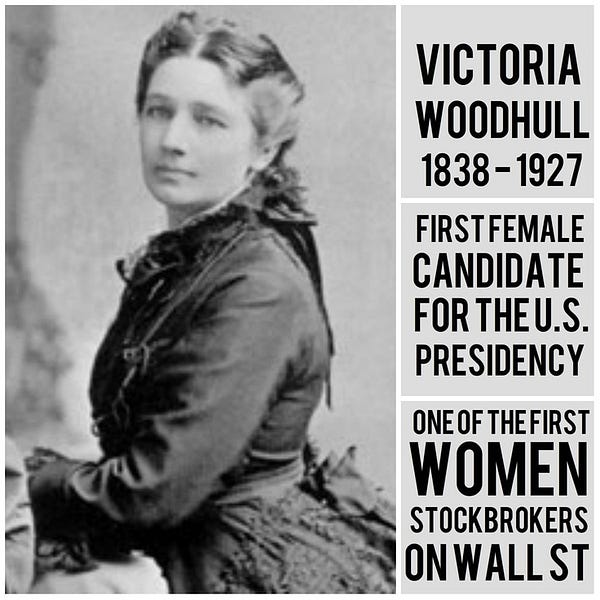
… Wives deliberately permit themselves to become pregnant of children and then, to prevent becoming mothers, as deliberately murder them while yet in their wombs. Can there be a more demoralized condition than this?… We are aware that many women attempt to excuse themselves for procuring abortions, upon the ground that it is not murder. But the fact of resort to so weak an argument only shows the more palpably that they fully realize the enormity of the crime .
-Victoria Woodhull
The gross perversion and destruction of motherhood by the abortionist filled me with indignation,
and awakened active antagonism. That the honorable term ‘female physician’ should beexclusively applied to those women who carried on this shocking trade seemed to me a horror. It was an utter degradation of what might and should become a noble position for women.
-Dr. Elizabeth Blackwell (1st woman to earn a medical degree)
-Susan B. Anthony
The Revolution, 4(1):4 July 8, 1869
The Tides In America Change After Four Decades of Abortionism
With the election of President Trump, a storm of Pro-Life legislation began to emanate from the federal government within his first week in office soon closely replicated across a number of states. Government funding for overseas abortions was stopped, and states began chipping away at the abortion industry in any way possible. Bodily dismemberment abortions were targeted as inhumane, and a national discussion on when human life starts began to electrify the nation. Video footage of the sanitary conditions of abortion facilities were publicized, including the proof that baby body parts were being sold for ‘research,’ and in some grotesque instances, babies born alive and left to die in botched abortions.
The Pro-Choice lobby responded with its own unique storm, bringing forth governmental, judicial, academic and entertainment industry action, including a special campaign from elected officials and celebrity-led scandals that pictured specific women as being the victims of specific powerful men, such as the #MeToo and #TimesUp social media campaigns. The desired effect of such orchestrated scandals being that women are routinely victims of exploitation and need the power to decide if they can end an unwanted pregnancy. Moreover, entertainment and news television networks lashed out, and continue to do so, launching an ‘identity politics’ attack on President Trump, Vice-President Mike Pence, pro-life congressional leaders, and outspoken Pro-Life citizens with a tag-team effect of overt and covert bully-targeting on the street-level, in addition to censorship from social media platform administrations, and across cable news and entertainment shows.
The President responded in solidarity with Pro-Life forces with a call to completely federally defund Planned Parenthood of the $550 million it receives on an yearly basis, and has dramatically reduced payments to the United Nations based on this issue and others.
As of November 2018. The United States of America has just concluded its state and congressional ‘mid-term elections.’ As if out of left-field, the Pro-Life movement has garnered an incredible wave of federal and state government support, largely due to the work of individual American citizens. These include Jeanne Mancini, Director of March for Life, Marjorie Dannenfelser,
Director of the Susan B. Anthony List, Dr. Alveda King, niece to the Reverend Doctor Martin Luther King, Jr., Senator Marsha Blackburn of Tennessee, Congresswoman Diane Black of Tennessee, and Lila Grace Rose, Director of the Live Action organization. A bevy of Pro-Life organizations, such as Right To Life and Human Coalition also lobby the government and the citizenry, creating awareness on the ills begotten from protecting ‘reproductive rights,’ and the need to bring about a different culture of empathy that cherishes womanhood, protects the traditional family, and empowers both men and women to live responsibly as American citizens.
In closing, it is now 170 years after 1848 and the Women’s Rights Movement has effectively become a Human Rights Movement again.










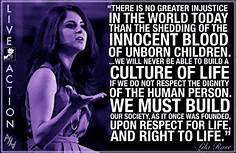
Comments